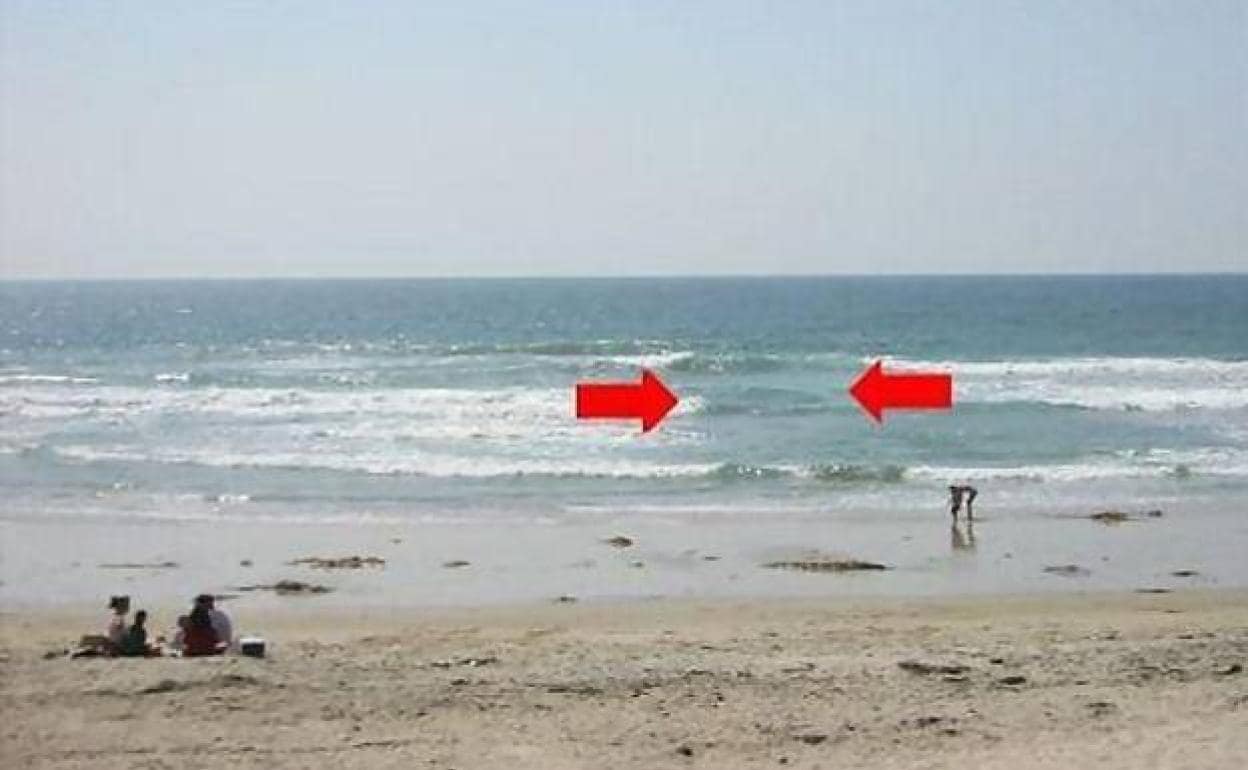

Sections
Highlight

Almudena Nogués
Malaga
Wednesday, 17 August 2022, 12:05
At present there are strong gusts of westerly wind on the Costa del Sol and in additional to the strong swell, which makes swimming more difficult, the sea temperature has dropped by about 10C from the 28C recorded on some days this month.
Swimmers always have to be extra careful when there are strong waves, but there is another phenomenon to be aware of as well: riptides, which many people have never heard of but which are dangerous, especially for children or elderly people, who find it more difficult to get out of them and back to safety.
Spain's Guardia Civil police force has recently posted warnings on social media about how to spot a riptide, explaining that the areas with this strong undertow normally look like a calm area between the waves. Although these currents pose one of the most common risks when swimming in the sea, they can end in tragedy.
These currents are flows of water which occur perpendicularly to the shore and then head out to sea. They are suction currents and, contrary to many people's beliefs, they are not as wide as the beach: they create a type of ‘corridor’ which the water from the wave that has just broken finds the fastest way to return.
The Spanish Lifesaving and Rescue Federation says the waves in these areas with a strong undertow look calmer, so people often make the mistake of thinking that would be a good place to swim, when in fact it is the most dangerous.
If you find yourself in this 'corridor' with its strong undertow the first thing to do, experts stress, is to stay calm and remain afloat. If you panic your movements will become more abrupt and energetic, using up your strength and creating conditions in which you could drown.
Never swim against the current, they also say. The best thing is to swim parallel to the beach, or at an angle of 45º across the current, and then towards the shore. If you can’t get out of the undertow area, it’s best to try to float, recover your breath and wave to signal that you need help.
Publicidad
Publicidad
Publicidad
Publicidad
Esta funcionalidad es exclusiva para registrados.
Reporta un error en esta noticia

Debido a un error no hemos podido dar de alta tu suscripción.
Por favor, ponte en contacto con Atención al Cliente.

¡Bienvenido a SURINENGLISH!

Tu suscripción con Google se ha realizado correctamente, pero ya tenías otra suscripción activa en SURINENGLISH.
Déjanos tus datos y nos pondremos en contacto contigo para analizar tu caso

¡Tu suscripción con Google se ha realizado correctamente!
La compra se ha asociado al siguiente email
Comentar es una ventaja exclusiva para registrados
¿Ya eres registrado?
Inicia sesiónNecesitas ser suscriptor para poder votar.